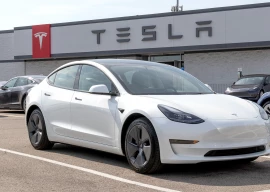
Imran Khan’s successful rally last month, in Karachi, has opened a yet new chapter in Pakistan’s political landscape. Despite many apprehensions about what the party actually stands for, its recent surge in popular appeal may bear well for the larger field of Pakistani politics. If nothing else, the rallies in Lahore and Karachi have brought a younger generation of potential voters into the political arena. There is also a move among disaffected prominent political figures from other parties to drift towards the PTI itself, the most recent count has inched above 30. This trickle may take on a more sustained form, and if it does, especially in rural constituencies, then the PTI may become a major player whenever elections are held next in Pakistan.
This process is perhaps analogous to how in the late 1960s, many joined the PPP under Zulfikar Ali Bhutto’s leadership. Then too, starting with a group of young members, mostly middle class professionals and with the support from left-wing student groups, Bhutto eventually attracted the Pirs, Makhdooms, Chaudhrys and Khans. The democratic vision and populism of his early years, however, faded quickly and despite Bhutto’s PPP coming into power through the overwhelming support of the students and radical left groups, there was a subsequent authoritarian turn in his politics. Bhutto’s government, despite its populist rhetoric and genuine attempts to institute reform in Pakistan’s cultural, economic and political life, ended up harassing and persecuting political opposition within and outside the party, from the left or from the right of the political spectrum.
No one can predict what future trajectory the PTI’s populism will take. Yet, I seek to raise a cautionary note about the contours of populist politics. Populism revolves around a charismatic figure and has historically given rise to authoritarian and undemocratic governance structures (lest we forget Peron and others). In their desire to succeed, populists tend be less ideologically focused and pragmatically accept a range of political actors in their parties, many from the established elite circles. If this happens, as the trends shows, it may come to haunt the PTI as it unmoored the PPP from its earlier more inclusive and democratic history.
A crucial difference between the PTI and that earlier incarnation of PPP, is programmatic vision. It may be too early to demand a detailed plan from the PTI, similar to the one symbolised by PPP’s late 1960s slogan of roti, kapra aur makan. But Imran Khan’s recent speech gave hints of some of the ways the cricketing legend thinks about addressing problems. If we analyse his words carefully, he basically runs on a resume of efficiency and order, whether speaking about his cricket captaincy or recalling his efforts to build the Shaukat Khanum Hospital. It is also an approach that intertwines modernist rationality with calls for transparency and technological innovation (“everything will be computerised, computers cannot be corrupt!”). Despite the anti-American rhetoric of the PTI leadership, these are approaches clearly gleaned from texts taught at elite US business and management schools. This technocratic fix (efficient systems, orderly management, maximising profit, curbing waste) is part of the lingua franca of contemporary global capital and ‘best business practices’ from which the PTI chief borrows heavily and dresses it in a language of cultural nationalism.
During the speech, it was heartening to hear how at the age of 18 when Imran Khan went to the United Kingdom he was impressed by their welfare system and he would like to emulate a similar system in Pakistan. However, the subsequent examples about economic growth hinted at other underlying influences. A people who have been suffering under economic duress may be susceptible to accepting superficial examples of countries that have witnessed growth and financial stability in recent years. But it is for the leadership, if it is indeed sincere, to be more careful in choosing its analogies. In his speech Imran Khan praised Malaysia, Turkey and Singapore for their economic “miracles”. These pronouncements, of course, do not portray the entire picture, while they sustain the myth of gauging a country’s progress and distribution of wealth through per capita income figures. Irrespective, Mahathir Mohamad of Malaysia and Lee Kuan Yew of Singapore may have enabled their respective countries to become “economic power houses”, but their records have been one of authoritarian rulers with strong undemocratic tendencies. Recep Tayyip Erdogan’s appeal to an emerging Turkish moneyed class, notwithstanding, the jury is still out on his party’s handling of the Kurdish question and the curtailing of civil and political rights.
Following this, the PTI chief’s raising the question of Balochistan showed his sensitivity toward the people of that province. However, the historical analogy to the reunification of West and East Germany as a solution for Balochistan exposed the superficiality of this analysis as well (small towns in Eastern Germany are hampered by economic instability, high youth unemployment and a growing influence of neo-Nazis). It also relied on the use of a technocratic logic to address a deeply complex problem of national self-determination and cultural rights. The paternalistic gesture of apology given to a wronged “younger brother” may be a part of a specific masculine idiom, yet increased “development” cannot by itself resolve the underlying cause of armed conflict in Balochistan. Although it may not have been be intended, such arguments culturally frame the current insurgency as a manifestation of “tribal backwardness” that can be overcome through the fruits of modernist progress.
Perhaps, such pronouncements by the PTI chief can be excused as mere performance in front of large crowds. But it may also point toward an underlying thought process that in its populist rendering encapsulates an elite agenda, which knows how to fix problems through the application of correct technocratic solutions; a somewhat simplistic top-down approach, ironically reminiscent of General Musharraf’s own proclamation of himself as being the CEO of Pakistan.
As we have witnessed in Pakistan (and elsewhere) before, populism can have authoritarian manifestations. The challenge remains to address the issues that are pertinent to the lives of the people, such as of poverty, health, education and housing. But this should not be at the cost of democratic freedoms or cultural rights. If the PTI, or any other political group, truly wants to deepen democracy in Pakistan then they need to bring these several threads of political practice together… respect for cultural difference, economic justice and civic liberties… only then, a more meaningful democratic future can be imagined.
Published in The Express Tribune, January 14th, 2012.
COMMENTS (13)
Comments are moderated and generally will be posted if they are on-topic and not abusive.
For more information, please see our Comments FAQ






















1711457205-0/US-Baltimore-Bridge-Collapse-(1)1711457205-0-270x192.webp)
























Thoroughly enjoyed reading this Kamran sahab. Another point of difference, when compared to Bhutto's PPP in its early years, is the party's relationship with the security establishment. Especially in relation to the Baluch question and the KPK borderland, and the military establishment's take on it, Imran Khan's jingoistic adherence to the security apparatus' sanctimony is particularly jarring and casts doubts on any intent at reconciliation on PTI's part. While it could be argued that Bhutto's military operations in Baluchistan were born of political expediency and he made a strange bedfellow for the army; one fears that Khan sahab would prove to be a dutiful spouse, his dealings in the matter arising from something far more dangerous - ideological and political inanity.
Too early even after 15 years??
@Riaz. Do you really believe that our political government has the real power? the power to make decisions about home policy or the foreign policy? I dont think so. But it can be changed if no party dances to the military band. Unfortunately, IK is too ready to embrace the security establishment to gain power.This is the reason IK wants to follow the military point of view about the militants/taliban. By the way, the analogy you presented, beats me.
@Hafeez: Why don't you worry about your current governments approach first, IK is just a candidate, your government has been in power for 4 years.
It's like saying, lets keep Churchill out of power in 1939 because he said he didn't support indian independence whilst in exile - come on !?
They and we are only human.
@faraz: Are the middle classes really what we should be worried about ? A well fed stomach should never compete with an empty one.
I applaud your hairsplitting approach.
Given current circumstances i would like you to carry out the same analysis on any of the other political parties on the scene.
The question is not whether IK would solve all our problems a la messiah. The real question is who, out of all the candidates, in whose hands would you trust your fortunes.
The same analysis could be made of any successful political leader in the world, never mind a potential leader. Noone can get it all right first time, but trying to provide people food, shelter and basic justice is a damn good start. Is that what the current or opposition parties offer us ?
Society needs a code of ethics to be successful., Pakistani society has none.
It has been said that democracy is a messy process but in compare to other forms of government, it is the best. Since independence periodically we Pakistanis have been experimenting with democracy but have failed. The major reason is the military clout. We have made it a superior power. In no other democratic country would have accepted the arrogant statement of the military regarding the Prime Minister's comment on COAS reply to the Supreme Court on "Memogate". Who is the boss? Also, the Supreme Court of a democratic country would not have considered the "Memogate" petition since no crime was committed and besides the Parliament was investigating the matter. It seems the present Supreme Court and the military are engaged in a process of weakening the democracy in Pakistan. The present government is inept but we have a recourse to fix it but not through military or judicial means.
A very objective analysis. I wish the author had also analyzed Imran Khan's stand on the current security situation, specifically towards the Taliban/militants. IK's view that terrorism or militancy in country, especially FATA, would vanish if USA leaves Afghanistan, sounds very childish and sometimes very ambigous. He needs to come clear on it.
Well written. Thoroughly enjoyed it.
Brilliant expose of the current mindset of the state and societal structure of Pakistan. Congratulation on your brilliant insight Mr. Kamran Asdar Ali
Better researched article than others on the same subject. I would have similar concerns as yours had I not heard him in detail in talk shows. I think what differentiates him from the prior populists is that he has already developed few sustainable institutional structures in his philanthropic work, his core ideological team is still made up of goal focused technocrats, his views on devolution of power are very strong, and his core vote bank is very non-forgiving when it comes to blunders. As far as the issue of Balochistan is concerned, development might not solve all of the problems, but it would be certainly a key step in the positive direction.
The middle class will be among the losers if real reforms take place. If Imran carries out correct economic decisions, like diverting gas from CNG stations to industry or removal of petrol subsidies, the middle class will be the first to turn against him.